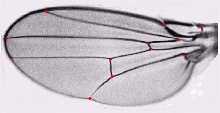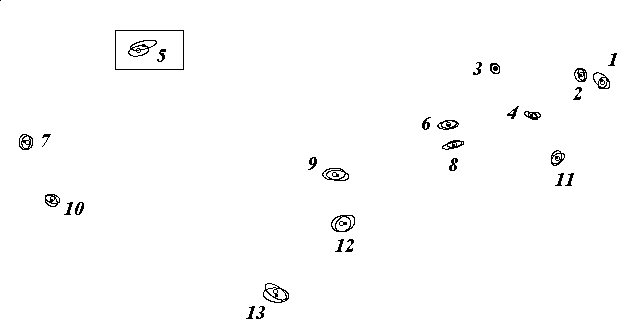Use of Drosophila melanogaster tra2ts2 in the study of sexual dimorphism of wing form

Average image of Cy female control wings from tra2ts2.
Computed with tpsSuper,
superimposition program of James Rohlf
from raw wing images.
A project of Joe Kunkel and Brian Bettencourt.
The subtle difference between male and female wings of Drosophila
melanogaster can be detected in individual animals. This promises to
allow an approach to studying the genetics of subtle morphological
differences.
The following plots were produced by PLANNAR, a plannar landmark geometry
program written by Joe Kunkel. An R approach to analysis of this data is
in development.
Confidence ellipses of 13 wingvein landmarks of male and female Drosophila

Landmark ellipses numbered, with number 5 marked for examination of male
and female Drosophila differences.
How can these confidence ellipses be used to descriminate between males
and females?
We use discriminant function analysis
to identify the sexual phenotype of individual wings.
The confidence ellipses of landmarks of reference samples of
males and females are used to establish discriminant functions for male and
female. Each test wing gets a score for being male and a score for being
female. The highest score predicts the sex of the wing.
Such scores have been 95-100% accurate in several independent tests.
Please review our
manuscript.
Back to: |
Kunkel Home Page|
Biology Dept.|
UMass Home Page|


